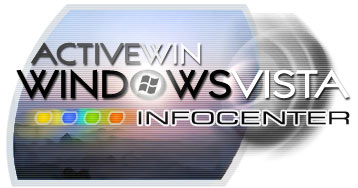
 |

|
| ActiveWin: Win Vista | Active Network | Intro | FAQ | Win XP Tips | Compatibility List | Forum |
|
|
|
|
|
DirectX |
|
ActiveMac |
|
Downloads |
|
Forums |
|
Interviews |
|
News |
|
MS Games & Hardware |
|
Reviews |
|
Support Center |
|
Windows 2000 |
|
Windows Me |
|
Windows Server 2003 |
|
Windows Vista |
|
Windows XP |
|
|
|
|
|
|
|
News Centers |
|
Windows/Microsoft |
|
DVD |
|
Apple/Mac |
|
Xbox |
|
News Search |
|
|
|
|
|
|
|
ActiveXBox |
|
Xbox News |
|
Box Shots |
|
Inside The Xbox |
|
Released Titles |
|
Announced Titles |
|
Screenshots/Videos |
|
History Of The Xbox |
|
Links |
|
Forum |
|
FAQ |
|
|
|
|
|
|
|
Windows XP |
|
Introduction |
|
System Requirements |
|
Home Features |
|
Pro Features |
|
Upgrade Checklists |
|
History |
|
FAQ |
|
Links |
|
TopTechTips |
|
|
|
|
|
|
|
FAQ's |
|
Windows Vista |
|
Windows 98/98 SE |
|
Windows 2000 |
|
Windows Me |
|
Windows Server 2002 |
|
Windows "Whistler" XP |
|
Windows CE |
|
Internet Explorer 6 |
|
Internet Explorer 5 |
|
Xbox |
|
Xbox 360 |
|
DirectX |
|
DVD's |
|
|
|
|
|
|
|
TopTechTips |
|
Registry Tips |
|
Windows 95/98 |
|
Windows 2000 |
|
Internet Explorer 5 |
|
Program Tips |
|
Easter Eggs |
|
Hardware |
|
DVD |
|
|
|
|
|
|
|
ActiveDVD |
|
DVD News |
|
DVD Forum |
|
Glossary |
|
Tips |
|
Articles |
|
Reviews |
|
News Archive |
|
Links |
|
Drivers |
|
|
|
|
|
|
|
Latest Reviews |
|
Xbox/Games |
|
Fallout 3 |
|
|
|
Applications |
|
Windows Server 2008 R2 |
|
Windows 7 |
|
|
|
Hardware |
|
iPod Touch 32GB |
|
|
|
|
|
|
|
Latest Interviews |
|
Steve Ballmer |
|
Jim Allchin |
|
|
|
|
|
|
|
Site News/Info |
|
About This Site |
|
Affiliates |
|
Contact Us |
|
Default Home Page |
|
Link To Us |
|
Links |
|
News Archive |
|
Site Search |
|
Awards |
|
|
|
|
|
|
|
Credits |

Windows Vista Section - Introduction
Microsoft Windows Vista is a major upgrade to the Windows operating system and is both an evolutionary and revolutionary step forward in the progression of the Windows platform. More base services than ever are provided to increase developer ability and productivity, as well as enhance the level of rich interactivity, usability, and integration delivered to the end-user.
The Windows NT kernel has been further enhanced to achieve greater levels of security, reliability, and performance. Several platform services and device driver interfaces have moved to (or returned to) user-mode, increasing platform resiliency and simplifying extensibility. Secure computing technologies may utilize trusted hardware components to help maintain user data privacy and system integrity.
Windows Vista also offers rich media experiences for end-users and developers. The most visible change in Vista is its new graphical user interface (GUI). Windows Vista's new GUI enables the seamless integration of 2D and 3D vector graphics, documents, animations, and media while maintaining the snappy, glitch-resillient performance Windows users expect by pushing the increased workload to the graphics processing unit (GPU). On systems that have older GPUs or just a plain 2D VGA graphics adapter, Windows Vista will scale back to graphical levels comparable to that experienced on Windows XP or Windows 2000.
The .NET Framework 3.0 (previously known as WinFX) is now an integral part of the platform and enables Windows Vista's new application experiences. The security, rapid development, and extensibility benefits .NET developers have enjoyed for years now extend to the primary API of the OS.
Windows Vista offers many other enhancements and conveniences. New visualization, organization, and search technologies let users view documents without first opening an associated application, organize information in a way that makes the most sense to them, and quickly find the information they need whether it is located on the end-user's computer, on a local network, or on the Internet. Inking, spellchecking and enhanced speech synthesis and recognition are integral parts of the user interface. Real-time communications services like conferencing, application sharing, peer-to-peer, and remote administration have been enhanced to make it easier to connect to your computer or to friends' computers remotely and have a richer experience doing so.
For more in-depth coverage, visit other content pages in the ActiveWin.com Windows Vista InfoCenter.
![]()
Return To The Windows Vista Section
